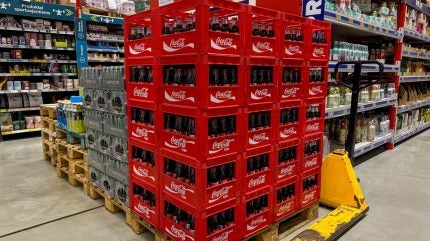
Businesses worldwide are increasingly seeking ways to streamline operations while reducing their environmental footprint. One effective solution gaining momentum is Returnable Transit Packaging (RTP).
This system uses durable, reusable containers—such as crates, pallets, and totes—that can travel through the supply chain multiple times before being returned for reuse.

Discover B2B Marketing That Performs
Combine business intelligence and editorial excellence to reach engaged professionals across 36 leading media platforms.
RTP combines operational efficiency with sustainability, making it a key tool for modern logistics.
Understanding returnable transit packaging
Returnable Transit Packaging refers to robust, reusable containers designed to withstand repeated use in transporting goods. Unlike single-use packaging, RTP is engineered to protect products while optimising storage and handling.
Common examples include plastic crates for automotive components, stackable bins for food delivery, and specialised totes for pharmaceuticals.
The principle behind RTP is simple: containers are used to transport goods, returned to the sender, cleaned, and reused in a closed-loop system.

US Tariffs are shifting - will you react or anticipate?
Don’t let policy changes catch you off guard. Stay proactive with real-time data and expert analysis.
By GlobalDataThis approach conserves materials, reduces waste, and aligns with global sustainability goals, making it an increasingly popular choice across industries.
Advantages of RTP for sustainable shipping
Cost savings and efficiency
Although RTP requires a higher initial investment than disposable packaging, long-term savings are considerable. Businesses can reduce recurring expenses on single-use packaging and waste disposal.
Standardised container sizes also improve shipping efficiency, optimising warehouse space and reducing transport costs.
Environmental impact reduction
RTP significantly lowers the environmental footprint of supply chains. Reusable packaging reduces waste and cuts carbon emissions, with studies showing a potential 40–60% reduction in CO₂ compared to disposable alternatives.
By incorporating RTP, companies contribute to circular economy principles and meet increasing regulatory and consumer expectations for sustainability.
Improved supply chain performance Durable, standardised RTP containers streamline logistics operations. They are easy to handle, stack, and store, enhancing warehouse organisation and accelerating turnaround times.
Integration with tracking technologies like RFID and IoT provides real-time visibility, helping prevent loss and improving operational planning.
Challenges and future outlook
Implementing RTP comes with challenges, particularly in establishing an efficient reverse logistics network for collection, cleaning, and redistribution.
Careful planning is needed to ensure containers meet specific operational requirements, including product type, handling, and transportation methods.
Despite these considerations, the future of RTP is promising. Industries such as automotive, food and beverage, and pharmaceuticals are increasingly adopting reusable packaging.
Emerging technologies in materials and tracking systems will make RTP even more durable, lightweight, and efficient, further supporting sustainable and cost-effective shipping solutions.
Returnable Transit Packaging represents a practical path toward sustainable shipping.
By adopting RTP, companies can achieve long-term cost savings, enhance supply chain efficiency, and actively reduce their environmental impact, supporting the transition to a more sustainable global logistics system.





